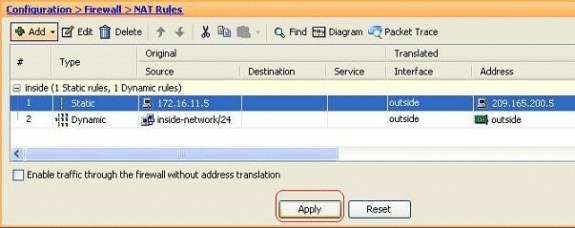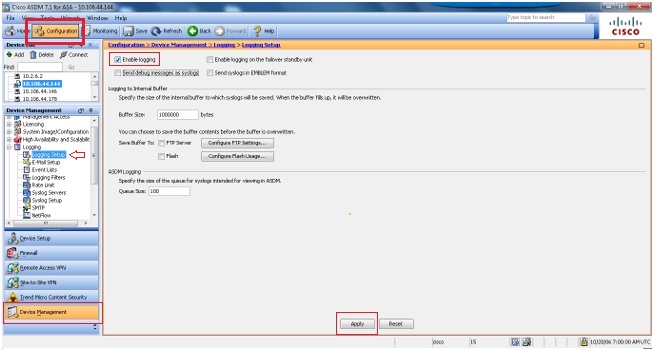

Be cautious when using the clear xlate command, because it immediately terminates the existing connections. Otherwise, the previous existing connection will remain there in the connection table until they time-out. Note: While making any modification to the existing translation rule, note that you need to use the clear xlate command for those modifications to take effect. As a result, you could try implementing PAT or you could try to edit the existing address pool to extend it. If the mapped pool has fewer addresses than the real group, you could run out of addresses if the amount of traffic is more than expected. You could assign the same NAT pool to another internal/dmz network. This is the equivalent CLI output for this ASDM configuration: nat-control

Note: The Enable traffic through the firewall without address translation option is unchecked. Click OK in order to return to the Manage Global Pool window.Ĭlick OK in order to return to the Add Dynamic NAT Rule window.Ĭlick OK in order to complete the Dynamic NAT Rule configuration.Ĭlick Apply for the changes to take effect. Also, specify a unique pool ID and click Add in order to add these to the address pool. Click OK in order to complete the selection.Ĭlick Manage in order to select the pool of IP addresses to which the real network will be mapped.Ĭlick Add in order to open the Add Global Address Pool window.Ĭhoose the Range option and specify the Starting and Ending IP Addresses along with the egress interface. In this example, the entire inside-network has been selected. Choose the real IP address of the hosts/networks using the Details button in the Source field. Go to Configuration > Firewall > NAT Rules, click Add, and then choose the Add Dynamic NAT Rule option in order to configure a dynamic NAT rule.Ĭhoose the name of the interface to which the real hosts are connected. In order to accomplish this, you need to select the real address of the hosts/networks to be given access and they then have to be mapped to a pool of translated IP addresses.Ĭomplete these steps in order to allow inside hosts access to outside networks with NAT: You could allow a group of inside hosts/networks to access the outside world by configuring the dynamic NAT rules.

However, if you have any translation rule configured, then disabling this feature does not remain valid for all the traffic and you will need to explicitly exempt the networks from address translation.Īllow Inside Hosts Access to Outside Networks with NAT
#PORT FORWARDING ON ASA ASDM HOW TO#
The image shown here depicts how to disable this through ASDM in order to allow connections through the ASA without any address translation. No connection can pass through the Security Appliance without a translation rule configured. This can also include connections from one DMZ to another, as long as the connection source interface has a higher security level than the destination. This includes connections from inside to outside, inside to Demilitarized Zones (DMZs), and DMZs to outside. Outbound access describes connections from a higher security level interface to a lower security level interface. They are RFC 1918 addresses which have been used in a lab environment. The IP addressing schemes used in this configuration are not legally routable on the Internet. Refer to Cisco Technical Tips Conventions for more information on document conventions. If your network is live, make sure that you understand the potential impact of any command. All of the devices used in this document started with a cleared (default) configuration. The information in this document was created from the devices in a specific lab environment.
#PORT FORWARDING ON ASA ASDM SOFTWARE#
Note: This configuration works fine from Cisco ASA software version 8.0 to 8.2 only, because there are no major changes in the NAT functionality. The information in this document is based on these software and hardware versions: Prerequisites RequirementsĬisco recommends that you have knowledge of these topics: It deals with the access control of the traffic through the ASA and how translation rules work. This document describes how the port redirection works on Cisco Adaptive Security Appliance (ASA) using ASDM.


 0 kommentar(er)
0 kommentar(er)
